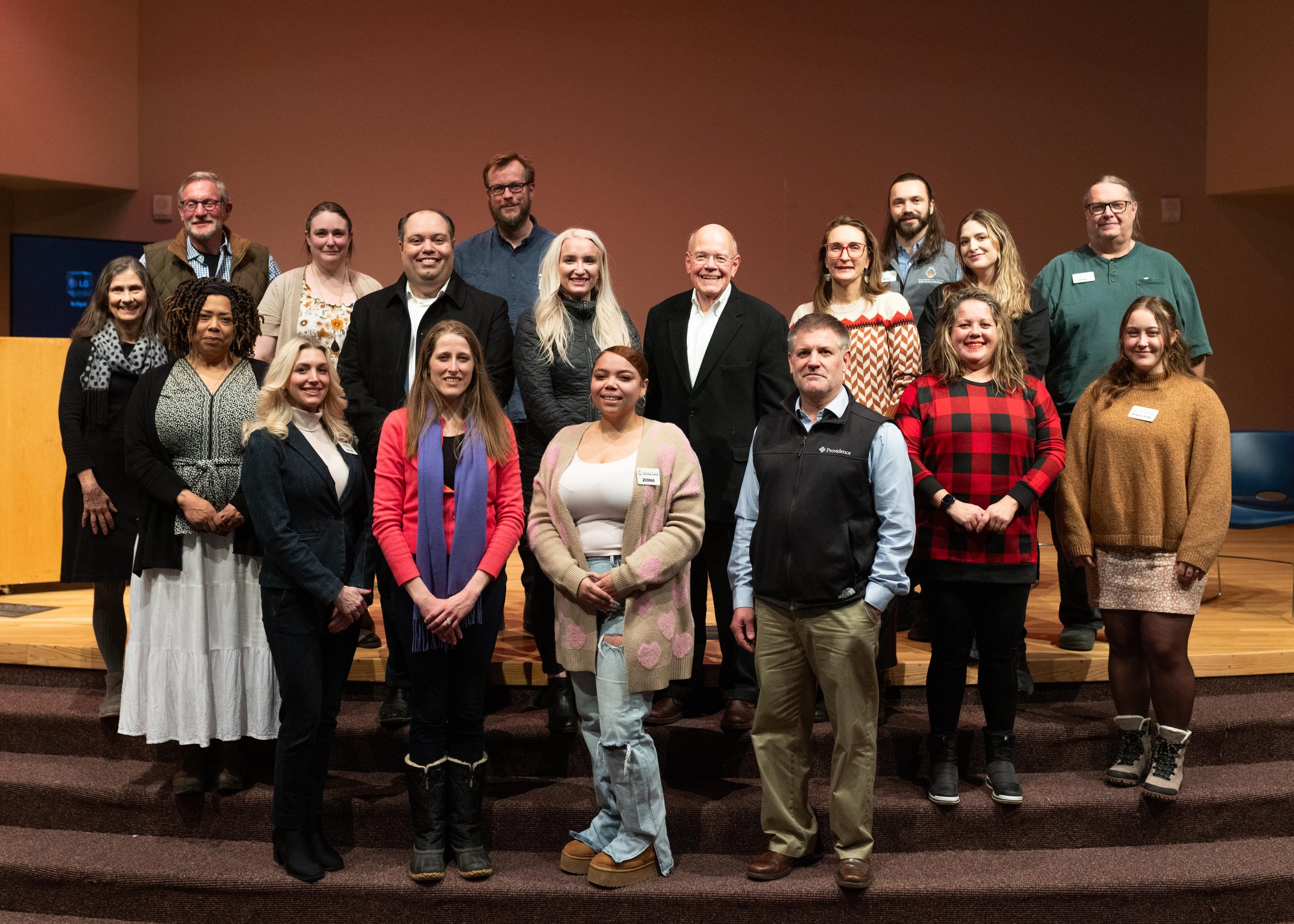2023-2028 Anchored Home Strategic Plan
This living document focuses on our efforts to harness and direct available resources to drive down homelessness. The community helped shape these strategies.
Anchored Home is an action-oriented guide
to solving homelessness in Anchorage.
It lays out concrete steps and measurements on which to measure progress and provide accountability. Key strategies improve the use of data, expand opportunities for people experiencing homelessness and braid funding streams for individualized housing and supports. This plan places equity at the forefront, ensuring that those who have been displaced by inequitable systems and with the greatest need are matched with a person-centered housing solution.
HOUSING IS THE SOLUTION
A message from Alison Kear and Nathan Johnson
Strategies in Anchored Home 2023-2028 keep our focus on increasing the supply of and equitable access to affordable housing and tailored supports for people experiencing homelessness. The approach builds on the framework of the prior Anchored Home plan and aligns with federal goals and investments including the multi-year, interagency roadmap “All In: The Federal Strategic Plan to Prevent and End Homelessness.”
We envision a person-centered system of housing and tailored supports. Because we know the answer. Housing is the solution to homelessness.
Alison Kear chairs the Anchorage Continuum of Care Advisory Council and Nathan Johnson chairs the ACEH Board of Directors.
Homelessness is a housing crisis
Studies show that systemic failures are the root cause of homelessness. People fall into homelessness because they cannot find housing they can afford.
Housing not only provides people with a platform for a better life, it’s also better for the bottom line.
A night in shelter costs the city $100
Housing with supports is only $85.
Anchored Home Strategic Directives
-
Strengthen the capacity of state and local governments, tribes, Native-serving organizations, and nonprofits to collect, report, and use data.
-
Promote equity and seek ways to expand partnership to include people with lived experience and ensure meaningful participation and compensation for their time and expertise.
-
Increase access to housing and homelessness funding and coordinate and leverage funding opportunities with existing federal, state, local and philanthropic funding.
-
Improve information-sharing with public and private organizations at the federal, state, and local level.
-
Expand engagement, resources, and incentives for the creation of new safe, affordable, and accessible housing.
-
Increase the supply and impact of permanent supportive housing for individuals and families with complex service needs.
-
Increase the use of evidence-based service delivery across all program types.
System Performance Measures
System Performance Measures help communities gauge their progress in preventing and ending homelessness and provide a more complete picture of how well a community is achieving its goal of functional zero.
Improve
Improve community approaches—including getting contributions from those experiencing homelessness—to identify, engage, and re-house people experiencing unsheltered homelessness, including through a Housing First approach.
Reduce
Reduce the average length of homelessness through improved coordinated entry system implementation including through partnerships with mainstream resources and programs.
Prevent
Prevent people from becoming homeless when they exit public systems, including but not limited to child welfare, prisons, and mental health institutions, through state, tribal and local partnerships.
Increase
Increase retention in housing by improving access to affordable housing, healthcare, and other client-centered supportive services.
Increase
Increase capacity of Continuums of Care (CoCs) to use existing data to measure and track system performance.
Measuring Success:
We will regularly report back to the community on progress. Expect the first update in August 2024. Besides specific goals, the following metrics have been established:
Number of people experiencing homelessness.
Length of homelessness.
First-time homeless.
Number of veterans experiencing homelessness.
Number of families experiencing homelessness.
Percentage of people exiting to permanent housing destinations.
Returns to homelessness.
Number of supportive services-only programs.
Percentage of people exiting homelessness into HUD and other subsidized-housing programs.








